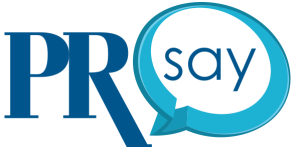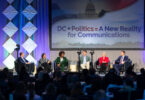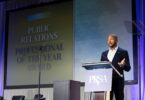In the late 1940s, my father, Lee Cherenson, studied public relations at Boston University. This was the first PR major in the nation, and my father was in the second graduating class. It was a foundational moment for our profession, a time when the field itself was being invented. There were no textbooks, no models — just a few brave souls defining what it meant to build trust through communication. My father would eventually describe those days as a supremely adventurous time, like being on the edge of an untamed frontier.
Seventy-five years later, sitting at PRSA ICON 2025, I felt a similar frontier spirit. The rise of AI is reshaping our work, but it also presents us with the opportunity to rebuild our foundation — ethically and intelligently.
Beyond the formal sessions, the halls were abuzz with ideas, creative use cases, and new ways of thinking that extend far beyond content creation. We’re learning how to shape the information environment itself, continuing to build intangible assets like trust, credibility and reputation.
Public relations has always been about connecting people and ideas. Now, we must evolve from content creators to information architects — professionals who design, safeguard and explain the systems through which credibility is built. Used responsibly, AI can help us do this.
As one of the authors of PRSA’s updated guidance, Promise & Pitfalls: The Ethical Use of AI for Public Relations Practitioners (2025), I was reminded that technology doesn’t alter our principles — it tests them. The report reaffirms PR’s six core values — advocacy, honesty, expertise, independence, loyalty and fairness — and reframes practitioners not as cautious AI users, but as ethical governors of adoption.
Those early instructors had to look at the profession with fresh eyes — they were teaching from possibility rather than precedent. As a member of PRSA’s Educational Affairs Committee and site reviewer for both PRSA’s Certification in Education for Public Relations (CEPR) and the ACEJMC Council, I believe our educators need to do the same today.
In an era of rapid change — and with higher education facing real headwinds — we must see ourselves as more than degree-granters. We are stewards of lifelong learning, helping students, professionals and institutions continually retool, adapt and grow. All our models must be challenged if we intend to prepare communicators for what’s next.
There are still those who fear AI’s impact, or consider it a form of cheating — and those concerns are valid. Transparency and ethics are essential, and we must also confront questions of sustainability, both in terms of employment and the environment. But retreat isn’t an option.
If we’re to shape the future rather than react to it, then we must lead — asserting our profession’s place at the forefront of this transformation. PR professionals are uniquely equipped to ensure that AI serves humanity, not the other way around.
In the early 1950s, my father and his peers faced post-war concerns about propaganda — with emphasis on the recently defeated Nazi regime — and a growing spotlight on civil rights. As an aside, consider that both my father and Martin Luther King Jr. attended Boston University during that same era.
Today, we face challenges related to misinformation, hallucinations, and, in the context of deepening polarization, crisis-level incivility and division. The challenges and tools may be different, but the responsibility remains the same: to protect truth, transparency and human dignity as information continues to flow.
Once again, we are pioneers.
Michael Cherenson, APR, Fellow PRSA, is the executive vice president of SCG Advertising + Public Relations. He served as PRSA’s chair and CEO in 2009.
Illustration credit: irina b.







